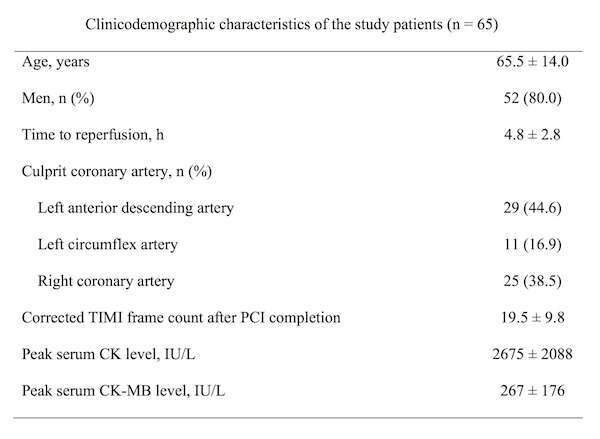
Impact of Postconditioning with Lactate-Enriched Blood on Short-Term Outcomes of Patients with ST-Segment Elevation Myocardial Infarction
2Cardiology Department, Tachikawa Hospital
Introduction: No approach has proven successful in preventing myocardial reperfusion injury in clinical settings. Herein, we report short-term outcomes of patients with STEMI treated using postconditioning with lactate-enriched blood (PCLeB).
Methods: Our modified protocol consists of intermittent reperfusion and timely coronary injections of lactated Ringer’s solution, aiming to achieve controlled reperfusion with tissue oxygenation and minimal lactate washout. The duration of each brief reperfusion was prolonged stepwise from 10 to 60 s. Lactated Ringer’s solution (20–30 mL) was injected directly into the culprit coronary artery at the end of each brief reperfusion and the balloon was quickly inflated at the lesion site, whereby the lactate could be trapped inside the ischemic myocardium. Each brief ischemic period lasted 60 s. After 7 cycles of balloon inflation and deflation, full reperfusion was performed. Stenting was performed thereafter.
Results: We treated 65 consecutive STEMI patients using PCI and PCLeB within 12 h of symptom onset. No patient experienced ventricular tachycardia/fibrillation during reperfusion. TIMI flow grade III and Blush grade ≥II were achieved after PCI completion in 63 patients (96.9%). No patient died or required continued oral diuretic/inotropic therapy for heart failure at 30 days.
Conclusions: PCLeB abolished serious reperfusion-induced arrhythmia, induced augmented microcirculation recovery, and led to zero mortality and no overt heart failure at 30 days in 65 consecutive STEMI patients.

Powered by Eventact EMS